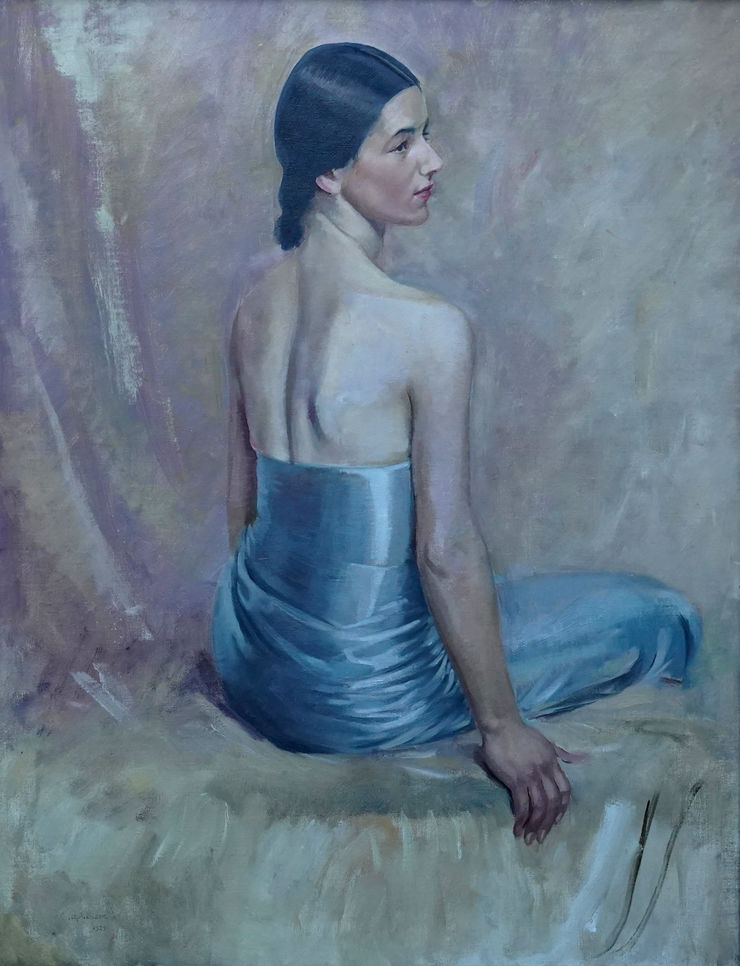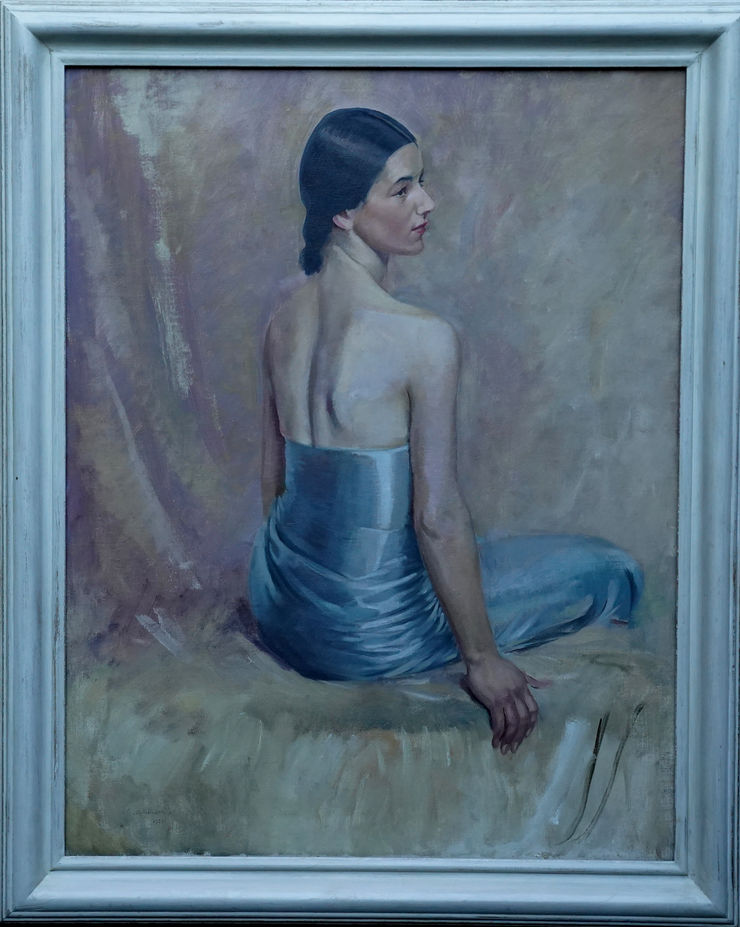John Cecil Stephenson (1889-1965)
| Artist Name | John Cecil Stephenson (1889-1965) |
|---|---|
| Title | Portrait of Elizabeth Allison |
| Description | This enigmatic portrait oil painting is by noted Slade School artist John Cecil Stephenson. In 1929, when Portrait of Elizabeth Allison was completed, Stephenson was living in Hampstead, working alongside other leading figures in British Modernism such as Barbara Hepworth, Henry Moore and Ben Nicholson. The present work reveals a lesser known side of the artist and his talent for figurative art in the earlier part of his career. The elegant posture and beautifully rendered fabric of the sitter’s dress stand out in focus against the subtle energetic background. A really lovely Art Deco portrait with excellent provenance. Signed and dated J C Stephenson ' 1929 lower left. Signed again, titled and dated Elizabeth Allison/J C Stephenson 1929 (on the reverse). |
| Provenance | Sale, Sotheby's, London, 2 October 1996, lot 40 Rosebery's, London, Modern & Contemporary British Art, 11 Jun 2019, lot 36. |
| Medium | Oil on Canvas |
| Size | 27 x 35 inches |
| Frame | Housed in a gilt frame, 42 inches by 34 inches and in good condition. |
| Condition | Good condition. |
| Biography | John Cecil Stephenson (1889-1965). Painter, born in Bishop Auckland, Co. Durham. He studied at Darlington Technical College, 1906-08, at the Leeds School of Art, 1908-14, the RCA, 1914-18, and Slade, 1918. Between 1915 and 1918 he did war work, making tools. In 1919 he took on Sickert's studio, 6 Mall Studios, Hampstead, where he was later joined by Herbert Read, Barbara Hepworth and Henry Moore. From 1922 until 1955 he was Head of Art Teaching in the Architectural Department, Northern Polytechnic, Holloway Road. In 1932 he began making his first abstract works, exhibiting during the next decade in many abstract and constructive shows in England, France and the USA. In 1934 he exhibited with the 7&5 Society, along with the likes of Ben and Winifred Nicholson, Ivon Hitchens, Henry Moore, Barbara Hepworth and John Piper. During World War II he returned partly to figurative work, making paintings of the Blitz. From the 1950s he returned to large abstract paintings, realising many of the abstract compositions he had sketched out on a small scale in the previous decade, when materials had been in short supply. In 1951 he made a 10 x 30 ft. fluorescent paint mural for the Festival of Britain, and began working with ply glass for murals. In 1958 he suffered three strokes, which left him unable to move or talk. Partly for this reason he is today less well-known than many of his contemporaries, but he was one of the key figures in the development of abstract art in Britain. He is represented in the collection of the Tate and internationally. Selected Literature Cecil Stephenson 1889-1965, Fischer Fine Art, London, 1976. Simon Guthrie, The Life and Art of John Cecil Stephenson: A Victorian Painter's Journey to Abstract Expressionism, Cartmel Press Associates, 1997. |
| Price | £9000 |

